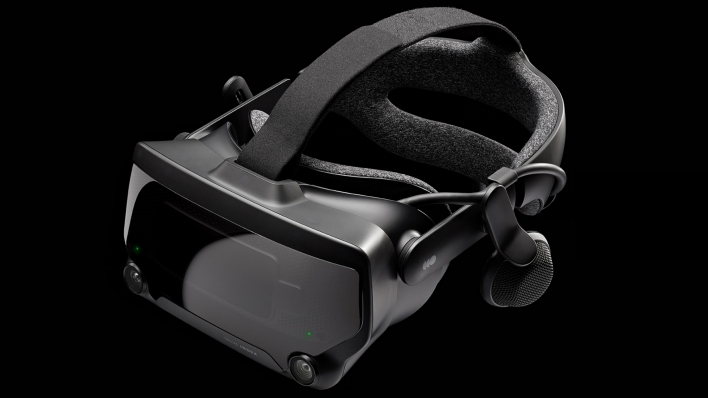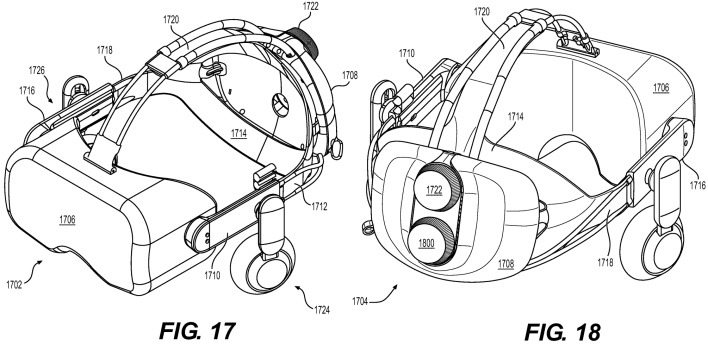Valve VR Patent Hints At Key Design Details For Its Wireless Deckard Headset

Over the past year, much of the buzz surrounding Valve, the company behind Steam, has concerned the Steam Deck. However, despite the hype-filled launch of its handheld game console, it seems that Valve hasn’t forgotten about its other gaming device endeavor: virtual reality (VR). In fact, it appears as though the company’s dive into portable gaming technology with the Steam Deck may be an indicator of what is to come from Valve in the VR space.
Valve is already planning a Steam Deck 2, and, during an interview about this future device, Gabe Newell, the co-founder and president of Valve, said that some kind of VR capability may make its way to the Steam Deck. Beyond the Steam Deck itself, the technology powering the handheld console might enable Valve to offer a wireless VR headset akin to Meta’s Oculus Quest 2. Back in August of last year, Greg Coomer, a product designer at Valve, answered a question about whether the Steam Deck’s custom APU might appear in a standalone VR headset by saying, “We’re not ready to say anything about it, but it would run well in that environment, with the TDP necessary... it’s very relevant to us and our future plans.”
Valve is already planning a Steam Deck 2, and, during an interview about this future device, Gabe Newell, the co-founder and president of Valve, said that some kind of VR capability may make its way to the Steam Deck. Beyond the Steam Deck itself, the technology powering the handheld console might enable Valve to offer a wireless VR headset akin to Meta’s Oculus Quest 2. Back in August of last year, Greg Coomer, a product designer at Valve, answered a question about whether the Steam Deck’s custom APU might appear in a standalone VR headset by saying, “We’re not ready to say anything about it, but it would run well in that environment, with the TDP necessary... it’s very relevant to us and our future plans.”

Fast forward to this week, and the US Patent & Trademark Office made public a design patent application filed by Valve in December. The patent application depicts a head-mounted display (HMD) or VR headset, though the patent looks to be for an adjustable strap with included speakers, rather than a full VR headset. The patent application includes many detailed images depicting the inner workings of the strap’s two adjustable knobs, as well as the articulating headphones.
Nonetheless, the images and descriptions seem to point to a possible wireless headset. The overall design depicted in the images looks pretty similar to Valve’s current wired VR headset, the Valve Index. However, where the Index is open in the back, the design depicted in the patent application includes a rear housing. In regards to this additional component, one of the descriptions reads, “The harness may couple to a rear housing disposed at the back of the HMD. The rear housing may accommodate various computing components of the HMD.” Another section of the document (PDF) says that possible components could include both a battery and processors.
Nonetheless, the images and descriptions seem to point to a possible wireless headset. The overall design depicted in the images looks pretty similar to Valve’s current wired VR headset, the Valve Index. However, where the Index is open in the back, the design depicted in the patent application includes a rear housing. In regards to this additional component, one of the descriptions reads, “The harness may couple to a rear housing disposed at the back of the HMD. The rear housing may accommodate various computing components of the HMD.” Another section of the document (PDF) says that possible components could include both a battery and processors.

This information may point to a standalone wireless VR headset from Valve, but a wireless VR headset doesn’t necessarily have to operate independent of a desktop PC. An extended reality (XR) hardware analyst by the name of Brad Lynch found a preliminary setting for SteamVR that would create a Wi-Fi hotspot, presumably so a VR headset could connect to a gaming PC in a wireless manner. The PC would drive the HMD in such a configuration for better performance than a mobile chip could manage. A wireless VR headset with an integrated APU could potentially have the option of operating independently or connecting to a PC via Wi-Fi for improved performance and graphical fidelity.
This same analyst previously found evidence in SteamVR software that Valve’s next generation VR headset is currently codenamed “Deckard.” Deckard is the last name of the protagonist in the sci-fi novel, later adapted into a movie, Blade Runner. The name also includes “Deck,” potentially indicating that the headset will indeed be powered by the Steam Deck’s custom APU.
Top image courtesy of Valve
This same analyst previously found evidence in SteamVR software that Valve’s next generation VR headset is currently codenamed “Deckard.” Deckard is the last name of the protagonist in the sci-fi novel, later adapted into a movie, Blade Runner. The name also includes “Deck,” potentially indicating that the headset will indeed be powered by the Steam Deck’s custom APU.
Top image courtesy of Valve

